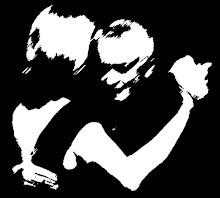In a post 3 years ago “What makes a good milonga”, I suggested that there were 4 key ingredients contributing to a good milonga: the (welcoming) organisers, the codes, the venue and last but not least, the music. However, their interaction and effectiveness have a lot to do with the organisers’ desire to be pro-active. Here are 3 typical approaches used by organisers – see if you recognise any or all of them in milongas you’ve attended:
1. Heavy-handed:
There is a milonga in Buenos Aires that used to have a list of rules on display
at the entrance. No doubt there about
the expectations, and the organisers enforced them in a fairly cold and
unwelcoming manner. There was a feeling
of tension and exclusivity. Not keen to
go back there, despite the high level of dancing.
2. Pro-active: Anyone who has been to Oscar & Lucia’s
milonga Lujos at El Beso & Plaza
Bohemia, or earlier at Maipu 444, will be very aware that there is a calmness
to the dancing, a lot of respect for other dancers, and an implicit
understanding of what is expected. The
organisers are highly respected, and are quite willing to intervene if
necessary, but in a gentle and supportive manner. As a dancer, you feel comfortable, because
the behaviour of others is predictable and safe. Definitely among my regular milongas.
3. Laissez-faire:
The crowd determines the behaviour on any one night, and over time, a trend
develops – often downward. The
floor-craft is unpredictable, and the dancing styles vary from good salon
through to stage-style. The latter
results in dangerous activity, frustration, and good dancers leaving the floor early
or even the milonga. Unfortunately, the
organisers are either too nice, unaware or lack the confidence to
intervene. Maybe the milonga could be
good, but it’ll take an extended time to slowly change its culture – using both
active intervention when absolutely necessary, and gradually increasing the
awareness of milonga etiquette through a range of strategies.
In brief, the organisers need to have a vision of what they
want to achieve – presumably a good milonga – and how they plan to achieve it.
Have you experienced any of these approaches?
Bob
